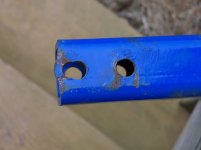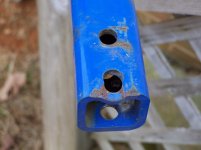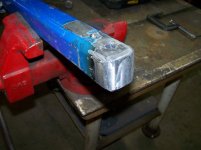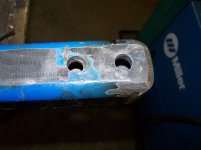nickel plate
Veteran Member
Jim, I used your previously posted step by step 16LA removal tutorial and in conjunction with my 16LA manual, the detachment went smooth. I keep your verbal instructions with photos in my NH file. Why don't you re-post that here again?I've added some photos just for discussion. The last photo is probably the most critical for ensuring the leg is not damaged. When you bring the arms down to relieve pressure on the pins for removal, you need to use the front lip of the bucket rather than keep your bucket curled all the way up. Using the front lip down will ensure the leg doesn't get overstressed in this step. Also, if you remove the loader with only the quick attach plate installed, you can extend it all the way out to keep from bending the leg while putting down pressure to pull the pins.
BTW: Ignore the post hole diggers in the photo. I was using them to demonstrate that the loader won't move around in another discussion.
I would like to add that anyone doing this with any combination of tractor and loader especially for the first time, GO SLOW and all will be well.



